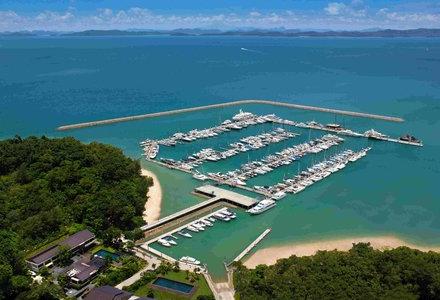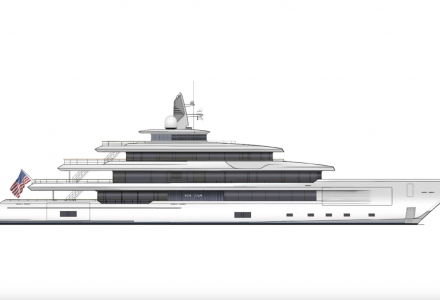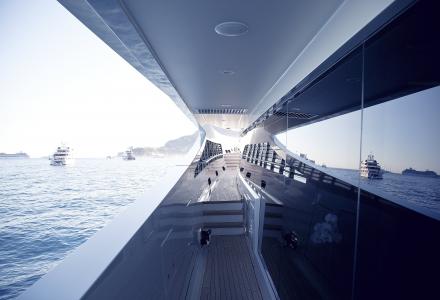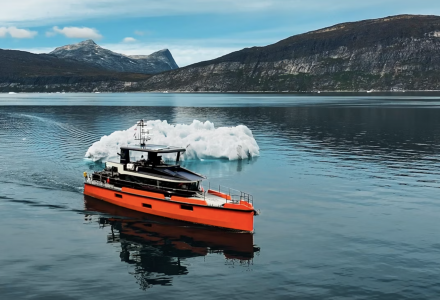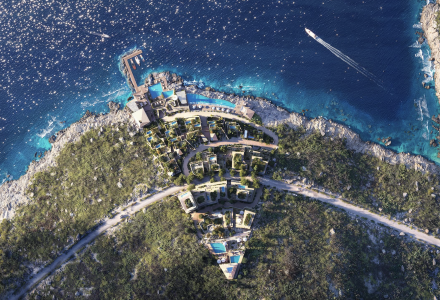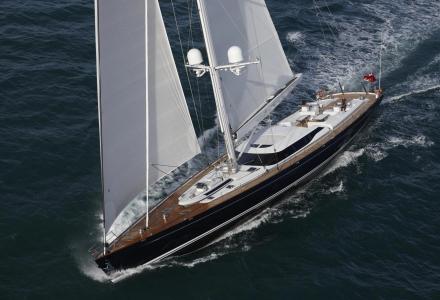In recent years, Asia has rapidly been becoming a major yachting hub. Taiwan has been leading the charge, but, more recently, other countries in the region, particularly in Southeast Asia are all posed to experience major growth in the motor yacht industry.
As the ultra high net worth (UHNW) lifestyle becomes increasingly internationalized, there is growing interest in yachts among Southeast Asia's 4,690 ultra wealthy individuals, who have a combined net worth of $625 billion, according to the Wealth-X and UBS World Ultra Wealth Report 2013.
At last year's Asia Pacific Yachting Conference, Mykolas Rambus, CEO of Wealth-X, said, "Southeast Asia is still a new and uncharted market for the yachting industry, presenting huge opportunities as well as complex challenges for companies seeking to grow their business."
Rambus also noted that the intergenerational wealth transfer will be beneficial to the yachting industry in the region, where many clients are younger than the global average and are receptive to seeking new lifestyle experiences.
So let's delve what is driving the Asian yacht market.
Jean-Marc Poullet, Chairman Asia BURGESS, says: "Slowly but surely, we see an increasing interest of Asian clients into our segments of yachts. We also believe that Asia's cruising grounds will become increasingly more popular, especially as they progressively open for charter."
While shipyards in the UK and US are seeing a number of closings and acquisitions, their Asian counterparts thrive, simply because their costs of operation are so much lower. But, the industry is being driven by more than just the economy. There is a change of attitude toward boating in the region that is picking up steam.
Even with the current economic situation in China, Poullet believes it is a long-term opportunity. "The Chinese market is still very nascent and large yachts purchases are still very rare. As such the market is defined by a few individuals, who may or may not be affected by the stock market turmoils", he adds.
Southeast Asia is well-known for its islands filled with exotic beauty. These areas are also the home of some of the best SCUBA diving and sport fishing in the world. All of these factors are creating opportunities for yacht charters and push as well the brokerage and new build market forward.
Juliette van Bueren, Marketing coordinator - Asia of Northrop&Johnson, says: "The charter industry in Asia is still in the early stages of development but we've seen a tremendous increase in the number of visiting superyachts (private as well as charter yachts) and more and more interest from Europe and the US with enquiries for charter destinations other than the Med and Caribbean. At the same time Asian clients look towards chartering in glamourous destinations such as Monaco, Cannes and St Tropez."
Among the most popular charter destinations in the region, Van Bueren names Indonesia, Thailand and Burma. "But we also see more demand for adventurous destinations such as Raja Ampat and Komodo (Indonesia) and Mergui (Myanmar). Charter guests are willing to travel further for a great and unusual experience."
Despite steady and predicted growth, there are still many issues in Southeast Asia that stand in the way of the region achieving its full potential as a motor yacht hub - infrastructure and lack of marinas for one, and government regulations for another. For example, in Thailand, captains and crew can only stay in port for 30 days, and, for now, only Thai-flagged vessels are allowed to run charters. Indonesia, another country counting on the yachting industry to boost its economy, has Asia's highest import tax for yachts at 45 percent.
As both countries open up, not only will demand increase, but the domestic economy should also see a boost, noted Andy Treadwell, managing director of the Singapore Yacht Show. For example, the cost of fresh flowers on a yacht in Thailand comes to a whopping $100,000 a week, which will certainly benefit the local industry, he said.
While the various issues and hurdles that can make Southeast Asia a prime destination nowadays still cause quite a bit of uncertainty, the combination of economic benefits for the local countries and beautiful new locations for the yachting industry will likely show a compromise in the near future.
As the ultra high net worth (UHNW) lifestyle becomes increasingly internationalized, there is growing interest in yachts among Southeast Asia's 4,690 ultra wealthy individuals, who have a combined net worth of $625 billion, according to the Wealth-X and UBS World Ultra Wealth Report 2013.
At last year's Asia Pacific Yachting Conference, Mykolas Rambus, CEO of Wealth-X, said, "Southeast Asia is still a new and uncharted market for the yachting industry, presenting huge opportunities as well as complex challenges for companies seeking to grow their business."
Rambus also noted that the intergenerational wealth transfer will be beneficial to the yachting industry in the region, where many clients are younger than the global average and are receptive to seeking new lifestyle experiences.
So let's delve what is driving the Asian yacht market.
Jean-Marc Poullet, Chairman Asia BURGESS, says: "Slowly but surely, we see an increasing interest of Asian clients into our segments of yachts. We also believe that Asia's cruising grounds will become increasingly more popular, especially as they progressively open for charter."
While shipyards in the UK and US are seeing a number of closings and acquisitions, their Asian counterparts thrive, simply because their costs of operation are so much lower. But, the industry is being driven by more than just the economy. There is a change of attitude toward boating in the region that is picking up steam.
Even with the current economic situation in China, Poullet believes it is a long-term opportunity. "The Chinese market is still very nascent and large yachts purchases are still very rare. As such the market is defined by a few individuals, who may or may not be affected by the stock market turmoils", he adds.
Southeast Asia is well-known for its islands filled with exotic beauty. These areas are also the home of some of the best SCUBA diving and sport fishing in the world. All of these factors are creating opportunities for yacht charters and push as well the brokerage and new build market forward.
Juliette van Bueren, Marketing coordinator - Asia of Northrop&Johnson, says: "The charter industry in Asia is still in the early stages of development but we've seen a tremendous increase in the number of visiting superyachts (private as well as charter yachts) and more and more interest from Europe and the US with enquiries for charter destinations other than the Med and Caribbean. At the same time Asian clients look towards chartering in glamourous destinations such as Monaco, Cannes and St Tropez."
Among the most popular charter destinations in the region, Van Bueren names Indonesia, Thailand and Burma. "But we also see more demand for adventurous destinations such as Raja Ampat and Komodo (Indonesia) and Mergui (Myanmar). Charter guests are willing to travel further for a great and unusual experience."
Despite steady and predicted growth, there are still many issues in Southeast Asia that stand in the way of the region achieving its full potential as a motor yacht hub - infrastructure and lack of marinas for one, and government regulations for another. For example, in Thailand, captains and crew can only stay in port for 30 days, and, for now, only Thai-flagged vessels are allowed to run charters. Indonesia, another country counting on the yachting industry to boost its economy, has Asia's highest import tax for yachts at 45 percent.
As both countries open up, not only will demand increase, but the domestic economy should also see a boost, noted Andy Treadwell, managing director of the Singapore Yacht Show. For example, the cost of fresh flowers on a yacht in Thailand comes to a whopping $100,000 a week, which will certainly benefit the local industry, he said.
While the various issues and hurdles that can make Southeast Asia a prime destination nowadays still cause quite a bit of uncertainty, the combination of economic benefits for the local countries and beautiful new locations for the yachting industry will likely show a compromise in the near future.
